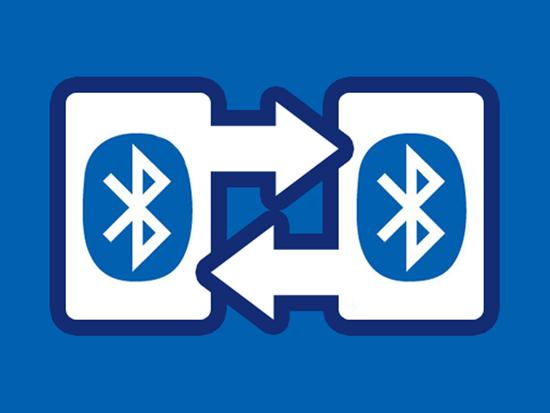Bluetooth is a kind of wireless communication technology. With the development of technology, Bluetooth low energy consumption has become our pursuit. So, what is Bluetooth Low Energy? How much do you know about Bluetooth Low Energy? This article will give you the answer. In addition, this article will also introduce the purpose of turning on Bluetooth on mobile phones. If you are interested in Bluetooth, you may wish to continue reading.

- Bluetooth Low Energy
(1) Research background of Bluetooth low energy consumption
The most important feature of Bluetooth 4.0 is the low-power technology. The extremely low running and standby power consumption can make a button battery work continuously for several years. The power consumption of traditional Bluetooth is an unavoidable problem, and the battery generally only works for one or a few days, which is not ideal for user experience and practical applications.
It can be seen that the emergence of low-power Bluetooth is not accidental. Nokia launched the predecessor of low-power Bluetooth technology – Bluetooth low-end extension technology as early as 2004. Later, around this technology, three companies, Nokia, Nodic Semiconductor, and Suunto, launched the Wibree Technology Alliance dedicated to ultra-low-power applications. The emergence of Wibree quickly attracted the attention of the Bluetooth SIG. At this time, the Bluetooth SIG also recognized the shortcomings of traditional Bluetooth and hoped to reduce the power consumption of Bluetooth. In 2007, the Bluetooth Special Interest Group announced that Wibree technology will be incorporated into the banner of Bluetooth technology, and is committed to creating ultra-low-power Bluetooth wireless transmission technology. Since then, Wibree technology has become a part of Bluetooth technology, also known as Bluetooth low energy technology.
(2) Research status of Bluetooth low energy consumption
The Bluetooth Special Interest Group (SIG) first defined BLE as part of the Bluetooth 4.0 specification in 2010. Since then, the following Bluetooth revisions have been released: Bluetooth 4.1, Bluetooth 4.2, and Bluetooth 5.0.
At present, Bluetooth low energy technology has the following characteristics:
- Low power consumption, can run for several years on coin cell battery
- Low cost, multi-vendor interoperability
- Unrestricted connection nodes
- Fast response and easy to use
- Quick connection, easy to use and develop
- Support IPV6 features
- Support Mesh networking
In addition, Bluetooth low energy technology has entered our daily life step by step. IOS6.0, Android4.3, Windows8.0 and other operating systems began to provide original ecological support for Bluetooth 4.0, which laid a good foundation for the development and application of low-power Bluetooth.
(3) Research significance of Bluetooth low energy consumption
Due to the wide range and variety of IoT applications, it is certain that the market needs various wireless technologies. Regardless, there will eventually be market winners and losers in specific application areas. As a rising star, low-power Bluetooth technology has become an ideal choice for the last 100 meters of the Internet of Things. It has excellent characteristics such as low cost, low power consumption, and intermittent transmission of small data. The connection is simple and convenient, safe and reliable. Widely used in wearable devices, medical health, smart home, smart transportation and other fields.
Second, the mobile phone to open the use of Bluetooth
(1) Transfer files
Bluetooth transmission requires distance. The earliest applications on mobile phones mainly focus on “file transfer”. As long as both parties turn on the Bluetooth function of the mobile phone, one party is in a searchable state, and the other party uses Bluetooth to search, and then the mobile phone Bluetooth pairing, after the pairing is successful, you can transfer files between mobile phones. Although the transmission speed is not fast, compared with other transmission methods at that time, the speed of Bluetooth file transmission is relatively comparable.
Therefore, turning on the Bluetooth of the mobile phone can be used to transfer files, and file transfer can be performed without a network.
(2) Connect the Bluetooth headset
With the continuous updating of wireless devices, the Bluetooth connection technology has also made certain progress. Among them, “Bluetooth headset” is one of the most widely used Bluetooth devices. However, the Bluetooth headset is different from the Bluetooth file transfer, and the Bluetooth headset is a passive device.
When the user wants to connect the Bluetooth headset, turn on the power switch of the headset. After the headset is turned on, the “searched function” is automatically enabled by default. After the device is successfully paired, the Bluetooth headset can be used to make calls.
In fact, the emergence of Bluetooth headsets has replaced wired headsets. It is a technology that has evolved from wired to wireless. Bluetooth headsets have almost all the functions of wired headsets, and because they are wireless connections, they are much more convenient to use than wired headsets. .
(3) Connecting external devices
With the continuous maturity of Bluetooth technology, there are more and more devices that can be connected to Bluetooth, such as car navigation, speakers, Bluetooth speakers, microphones, etc. These devices are different from Bluetooth headsets, and often only use a certain part of the functions extended by Bluetooth, such as Sound, image, software sharing, and more.
Taking the Bluetooth speaker as an example, as long as the mobile phone turns on the Bluetooth function, searches for the Bluetooth speaker, and actively pairs with it, the sound played by the mobile phone can rely on the transmission of the Bluetooth function to play the sound through the speaker, thus playing a role in ” extension”.



